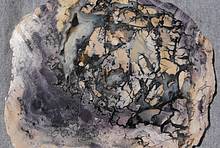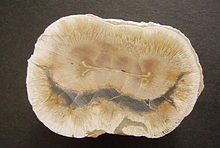Home PageAbout MindatThe Mindat ManualHistory of MindatCopyright StatusWho We AreContact UsAdvertise on Mindat
Donate to MindatCorporate SponsorshipSponsor a PageSponsored PagesMindat AdvertisersAdvertise on Mindat
Learning CenterWhat is a mineral?The most common minerals on earthInformation for EducatorsMindat ArticlesThe ElementsThe Rock H. Currier Digital LibraryGeologic Time
Minerals by PropertiesMinerals by ChemistryAdvanced Locality SearchRandom MineralRandom LocalitySearch by minIDLocalities Near MeSearch ArticlesSearch GlossaryMore Search Options
The Mindat ManualAdd a New PhotoRate PhotosLocality Edit ReportCoordinate Completion ReportAdd Glossary Item
Mining CompaniesStatisticsUsersMineral MuseumsClubs & OrganizationsMineral Shows & EventsThe Mindat DirectoryDevice SettingsThe Mineral Quiz
Photo SearchPhoto GalleriesSearch by ColorNew Photos TodayNew Photos YesterdayMembers' Photo GalleriesPast Photo of the Day GalleryPhotography
╳Discussions
💬 Home🔎 Search📅 LatestGroups
EducationOpen discussion area.Fakes & FraudsOpen discussion area.Field CollectingOpen discussion area.FossilsOpen discussion area.Gems and GemologyOpen discussion area.GeneralOpen discussion area.How to ContributeOpen discussion area.Identity HelpOpen discussion area.Improving Mindat.orgOpen discussion area.LocalitiesOpen discussion area.Lost and Stolen SpecimensOpen discussion area.MarketplaceOpen discussion area.MeteoritesOpen discussion area.Mindat ProductsOpen discussion area.Mineral ExchangesOpen discussion area.Mineral PhotographyOpen discussion area.Mineral ShowsOpen discussion area.Mineralogical ClassificationOpen discussion area.Mineralogy CourseOpen discussion area.MineralsOpen discussion area.Minerals and MuseumsOpen discussion area.PhotosOpen discussion area.Techniques for CollectorsOpen discussion area.The Rock H. Currier Digital LibraryOpen discussion area.UV MineralsOpen discussion area.Recent Images in Discussions
MeteoritesNASA think this is a meteorite. What do you think?

1st Sep 2014 22:54 UTCDavid Baldwin
http://www.nasa.gov/jpl/msl/pia18387/#.VATfvfn4dKN
(If you click on the image, it can be blown up to a 37m pixels for more detail).
I personally think this looks like a large chunk of basalt, which shows typical pitting of weathering/erosion patterns for cold, arid conditions.
Ironically, similar rocks have been encountered on Mars before, photographed by other craft in the early 90's, and studies have been carried out comparing the rocks to weathered dolerites from Antarctica ( http://adsabs.harvard.edu/abs/1991LPSC...21..711A ). These photos were obviously of a far lower resolution and quality compared to what we see here, where the rock appears to be almost polished and very well defined, detailing bubbles/cavities of various sizes. And would two iron meteorites really come to rest like this side by side?
Here on earth, meteorites are not 'allowed' to have bubbles in them, yet now, scientists are hypothesising over this one to come up with reasons why it can have bubbles. Erm, because it's basalt?
What do you guys think?

1st Sep 2014 23:13 UTCAlfredo Petrov Manager

1st Sep 2014 23:53 UTCBob Harman
After the landing, the meteorite might last quite unchanged for many millennia, perhaps even 1 - 3 billion years, yes??
As the Martian atmosphere is so thin, a 100 mph wind would only feel like a gentle breeze and billions of years would be needed to actively weather the rock surface, yes??. That is unless the atmosphere of Mars was denser into the quite recent past. Also, I am surprised that a thin layer of very fine Martian dust seemed not to be adherent to the meteorite surface (static electricity??) lying there on the Martian surface.
Am I correct with all my comments and suppositions?
BTW, Alfredo, nice meeting you at the East Coast Show! CHEERS…….BOB

2nd Sep 2014 00:47 UTCAlfredo Petrov Manager
I'm no expert on atmospheres, but I think meteorites start glowing in the lower ionosphere (100km up) when they hit Earth, and the gas pressure there is only a 1/100,000 or even only a few millionths or so of what it is at sea level, and Mars' atmosphere is 1/100 or 1/200 of Earth's at sea level, so the air on Mars, even though way too thin to keep you alive without a pressure suit, is still more than thick enough to burn up a small meteor, and give a bigger one a nice fusion crust.
Likewise, when you look at NASA's photos of rocks on Mars, many of the small ones look like typical Dreikanter, a classic ventifact shape, so the wind + dust must have done a good job of abrading them despite the thin air. One NASA spokesperson told the press that it was a "mystery" why so many of the smaller rocks were pyramid-shaped. Mystery? Duh! He obviously had not visited any windy deserts on Earth and seen the fields of dreikanter. (Easy for me to say, since I'm in a very windy desert now ;-) )
2nd Sep 2014 10:09 UTCUwe Kolitsch Manager




Mindat.org is an outreach project of the Hudson Institute of Mineralogy, a 501(c)(3) not-for-profit organization.
Copyright © mindat.org and the Hudson Institute of Mineralogy 1993-2024, except where stated. Most political location boundaries are © OpenStreetMap contributors. Mindat.org relies on the contributions of thousands of members and supporters. Founded in 2000 by Jolyon Ralph.
Privacy Policy - Terms & Conditions - Contact Us / DMCA issues - Report a bug/vulnerability Current server date and time: April 23, 2024 21:33:19
Copyright © mindat.org and the Hudson Institute of Mineralogy 1993-2024, except where stated. Most political location boundaries are © OpenStreetMap contributors. Mindat.org relies on the contributions of thousands of members and supporters. Founded in 2000 by Jolyon Ralph.
Privacy Policy - Terms & Conditions - Contact Us / DMCA issues - Report a bug/vulnerability Current server date and time: April 23, 2024 21:33:19











